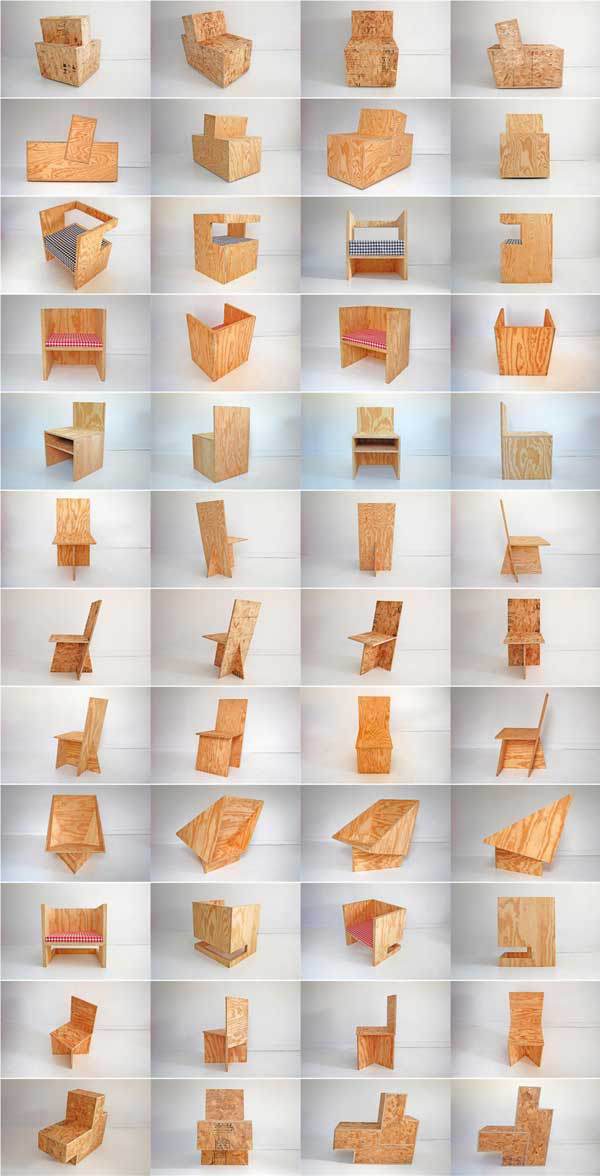Flat-Pack Design: Methods and Materials
IKEA's vast particleboard empire is built on one prime directive: affordability. Each product in their 10,000-item catalog starts with a price point and then backs into materials, colors, ergonomics, structure, and fastening systems. A key part of the cost strategy involves flat-pack, ready-to-assemble designs that are up to seven times more space-efficient to ship than conventional furniture. All of this tweaking and tinkering is done by a crew of 16 in-house designers and about 100 freelancers (a crew that is always looking for pitches!). The process is intense, taking up to five years, and involves close coordination with sawmills, manufacturers, distribution warehouses, and focus groups.
It would seem, then, that IKEA would be the authority on flat-pack design. Yet people hate putting together their furniture, generating memes in equal proportion to wobbly bookcases the world over. Frustration seems to cluster around two things: language-agnostic instructions made up of impenetrable diagrams, and fickle fasteners that never seem to equal the holes meant to accept them. That said, from an engineering view IKEA's hardware is ingenious, combining simple tools with self-registering systems that (hopefully) force pieces into alignment as they are assembled.
Hardware for the Hopen Bed, via Swedish Furniture Parts. Represents major basic hardware sub-systems.
There are three basic sub-systems: screws, barrel bolts (inline and perpendicular), and dowels or tacks. Dowels, often used in woodworking, are the simplest device, using ridged pegs to form non-structural joints or align long pieces. Tacks are used to fasten shelf backs to framing members-- a diaphragm that stiffens the whole bookcase and keeps it from racking, but is prone to loosening over time. Screws are used in concert with pre-drilled holes, and are also prone to gradual deterioration. None of these fasteners are very amenable to purposeful reversal, making them hard to take apart and re-assemble in the event of a move.
Barrel bolts are long slip-fit bolts, usually hex-headed, that interact with barrel nuts embedded in a matching piece. This creates a strong, self-registering joint that can be dis-assembled and re-assembled over time. However, manufacturing pieces with barrel bolt joints presents one major drawback: two holes must be drilled perpendicular to one another, in precise alignment with one another. Perpendicular boring vastly complicates the machinery that automates some parts of production, and precludes the use of basic CNC routers.
IKEA's system is one approach, honed through seventy years of iteration, that works on a giant corporate scale. However, the world of flat-packery includes designs fastened with screws, zipties, pegs, pins, ratchet straps, and, for the adventurous, nothing at all.
The Gurtbett Bed is held together with nothing but ratchet straps.
The simplest approach to flat pack is butt joining: the edge of one plate against the face of another, fastened with screws, glue, dowels, or biscuits. Adding a rabbet or a dado is marginally more complicated, increasing surface area of friction and glue interaction for a stronger joint. Most casework is butt-jointed, one way or another, as cabinets are just a series of adjoining boxes, and all the fasteners can be hidden.
The next level of complexity is the box joint, which uses opposing notches to make a strong, finger-locked corner joint. Variations, like a dovetail, interlock in such a way as to prevent plates from pulling apart. All of these joints so far are made with co-planar cuts, which makes them adaptable to CNC routing. Certain adjustments need to be made, especially around inside corners, to adjust for the radius of the CNC bit as it makes turns.
Incredible set of butt-jointed plywood chairs by designers ROLU, what they call "field recordings in wood."
Which brings us to Sean Ragan's comprehensive series of articles about CNC panel joinery over at MAKE magazine. The first is a great overview, progressing from simple to complex, with an emphasis on fastener-free solutions (though there is a few examples of ingenious barrel-bolt adaptations). A follow-up gets into clever methods for tensioned structures, interlocking lattices, and extracting curves from flat sheet. Cutting out zig-zag patterns or routing patterns that strategically weaken the plywood allow for beautiful in-plane bending.
Many of the joint designs that Ragan profiles are collected at Flexible Stream, which has an open-source warehouse of digital files. Anyone can download, scale, and insert the CAD into their own project, then put together with PDF assembly instructions. Design to Production, a German firm, has engineered an amazing process wherein patterns of routed trapezoidal grooves interlock to form and hold curves. WikiHouse is trying to assemble a whole CNC house prototype, using mostly pegs and wedges. And of course Instructables has a whole flat-pack channel, including a couple of my own feeble attempts.
While there seems to be a huge amount of techniques out there, the flat-pack design language is immediately recognizable. CNC-cut panel pieces, in particular, are very flat-packy , with butt joints and boxy profiles. The material choice is rather limited -- plywood, MDF, particleboard, melamine -- which limits the vocabulary to surface treatments.
But the technology is so young, and the techniques proliferating so fast, there's no telling how the language will evolve . . .
Chair by Design to Production.



